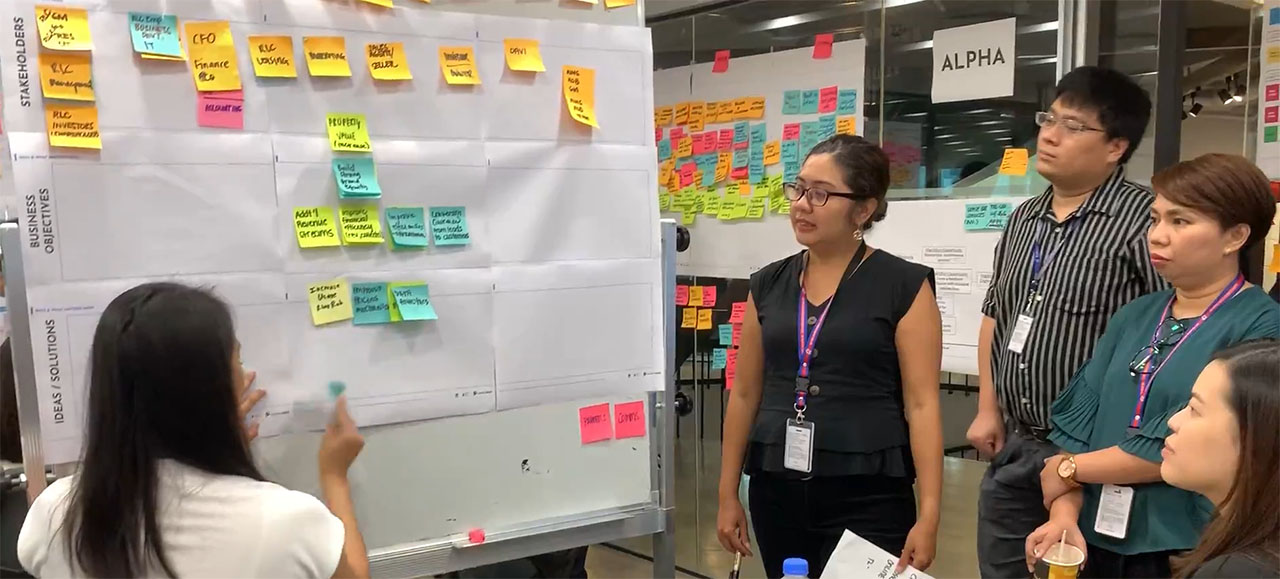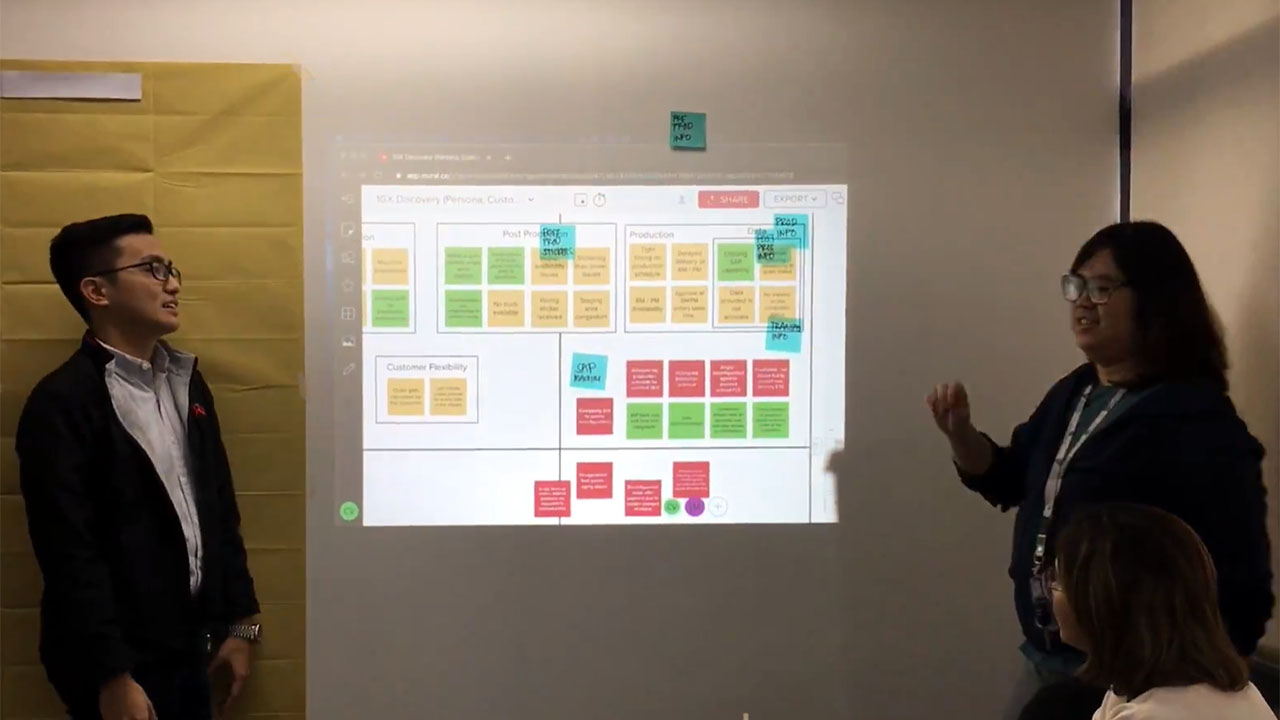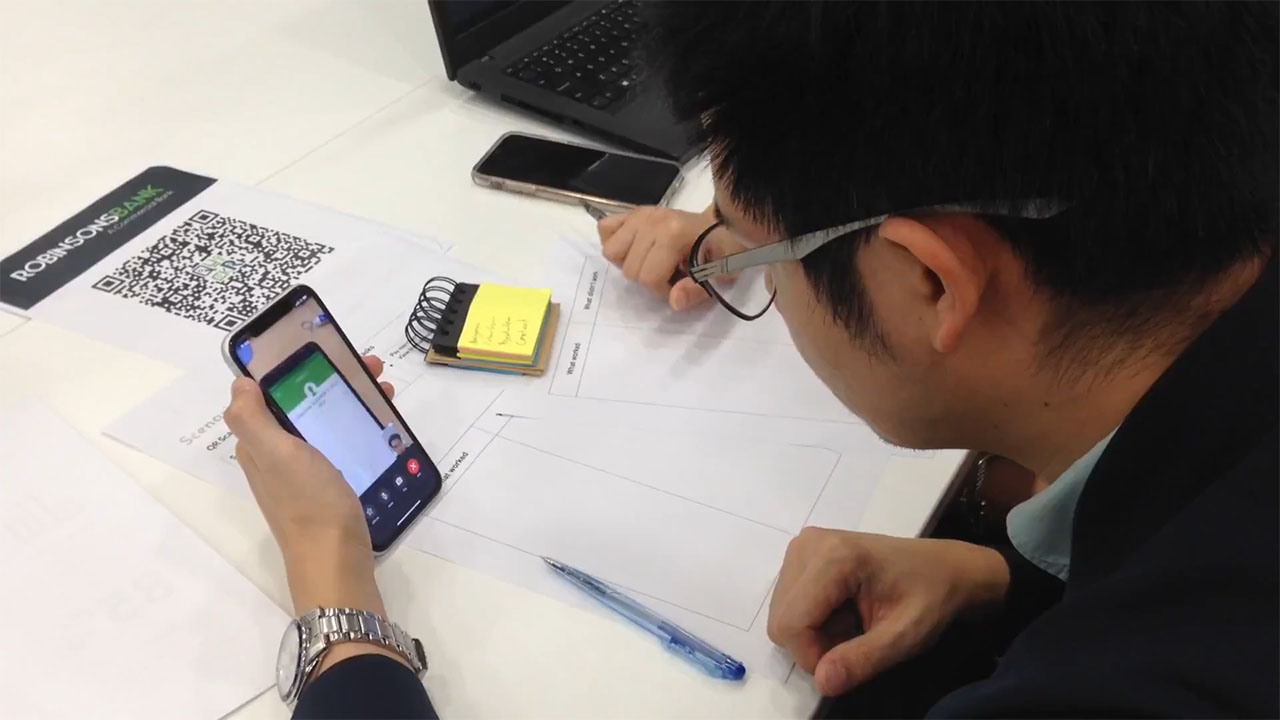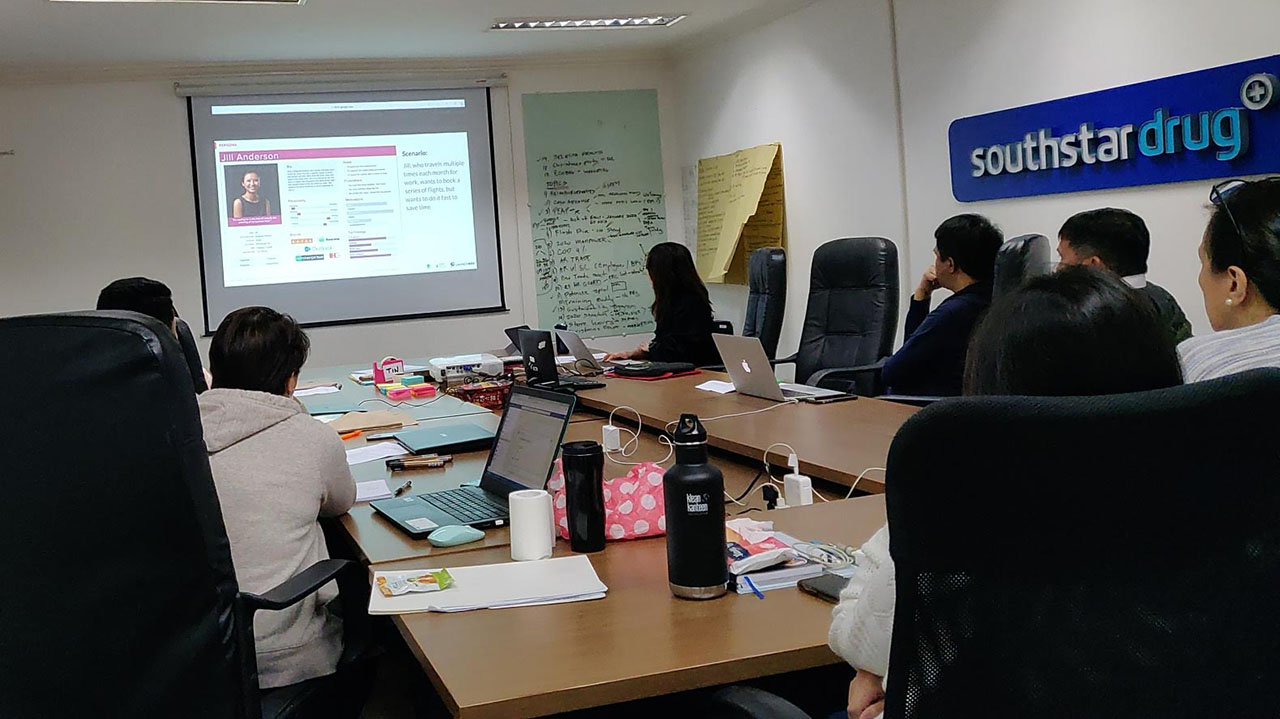If there is one good thing to come out of this pandemic, it’s the realization that digital transformation is not a luxury or a vanity project, nor is it optional or that it can wait. The current business climate has demonstrated that digital transformation is a necessity, a crucial tool for survival. Today’s corporate battle cry? Go digital, or go home.
In this aspect, JG Summit Holdings was not late to the party, having declared in early 2018 its intention to become the leading digital conglomerate in the country. Towards that goal, the Digital Transformation Office was created. In those early days, the DTO was given three tasks: 1) to prepare JG Summit’s business units for digitalization; 2) look at new efforts in digitalization, which may take advantage of the conglomerate’s ecosystem; and 3) identify the talent and skill sets in digitalization and organize these to be able to serve the conglomerate.

Among the first people brought onboard was Amina Rillo, who was recently appointed to lead the Digital Transformation division. Here, she oversees six teams involved in digital business strategy, design thinking and customer experience, product development, Agile project management, digital marketing, and business intelligence. As the vice president of the department, she reports directly to Lisa Gokongwei-Cheng, senior vice president for Digital Transformation and Corporate Services.
“Basically, our role is to understand what the business units and corporate center units need in terms of digital transformation, whether it’s to build digital products, improve processes or learn new ways of working. We help the teams become digitally fluent, agile, and data-driven so they can create better customer journeys and innovative products,” she says.
As a center of excellence, the Digital Transformation Office is whom the conglomerate’s business units (BUs) and corporate center units (CCUs) can approach for consultation or coaching. According to Amina, it is often done through a mix of lecture sessions with an expected product or tangible output at the end of the learning process. “We feel it is not effective if you just teach the concepts. We always want to make sure that there is practical application and coaching. And then we try to see them through.”
LIGHTING THE WAY
There were quite a few inaccurate notions about digital transformation when the DTO began its implementation. The first is that it was concerned only with creating digital products. Amina says, “You can’t just digitize the product, you also need to reimagine the process and user experience. You can’t just create a digital form for customers, for example, but the approval process would still take one month.”
In the case of JG Summit’s transformation, the team realized that initiatives cannot be tackled autonomously. “For it to be effective, it has to be [a transformation in] the process, people, and technology, all happening at the same time.”

Countering these early misconceptions, the DTO delivered a few key projects that have begun to make the digital transformation journey clearer to the rest of the conglomerate’s employees. The first of these so-called “lighthouse projects” were developed for Robinsons Land Corporation, the real estate arm of JG Summit. These include the creation of a Buyers’ Portal and Sellers’ Portal for RLC’s residential division, which simplified tasks for both sales agents and their clients; and for RLC’s hotels division, the creation of a hotel property management system, an end-to-end tool for delivering a perfect customer experience.
BY THE NUMBERS
Before joining JG Summit, Amina had been part of Summit Media, the media and publishing arm of the Gokongwei Group. It was here were Amina honed her skills and developed her expertise in digital solutions, media publishing, web product development, online advertising and data analytics. She joined Summit Media as Deputy Digital Group Publisher in January 2014, before becoming its Chief Digital Officer in January 2017.
“It was in 2013 when Lisa said we have to build our digital business,” shares Amina. At that point, Summit Media already had its share of successful websites, but it would still have to prepare for the changing attitudes toward print. As Amina recalls, “It happened much faster than we expected. We thought we had more years to build the digital business, but that’s how it happened.”
In April 2018, Summit Media called time on its remaining print titles to focus on digital, a risky strategy at the time, which has clearly paid off and allowed the company to thrive in the new digital age.
Shortly after Summit Media completed its pivot to the digital platform, Amina began “double hatting” for the media company and its parent conglomerate, coming on board as JG Summit’s Head of Digital Solutions for the Digital Transformation Office.
A DIFFERENT APPROACH
“Summit Media was the ‘proof of concept’ for the conglomerate, that [digital transformation] could be done, that you could actually shift the business to digital. At first, I thought, ‘OK, I know that in Summit Media we were able to do it, that should be quite easy to translate,’ but it’s not the same,” admits Amina.
As she familiarized herself with the conglomerate’s operations, she grasped that there was no “one-size-fits-all” solution to the transformation needs of the various business units. Each one required a unique approach owing to the different requirements as well as the working culture of each organization. Because of this, Amina makes sure the members of her teams have the resilience to handle hurdles or challenges. “The drive has to be there: the desire to make a difference not only in the things we help build, but in the way things are being done. It's great to be in a room full of digital talents, challenging each other constantly, but working towards a common goal. As the digital transformation initiatives within the conglomerate continue to grow, we’re always on the lookout for capable and dedicated people to support the DTO objective.

As the initial transformation efforts were not easy, the DTO reflected on how it might improve fulfilling its role as a center of excellence. “We needed to step back and assess the challenges we were facing. We had to think of how we could make the learning stick, to have a common understanding of what ‘new ways of working’ really meant. That’s how we conceptualized Launchbox.”
THINKING OUTSIDE THE BOX
In November 2019, a year and a half into JG Summit’s digital transformation journey, it unveiled the Launchbox program. Inspired in part by accelerator programs, Launchbox would require participating business units to “enroll” projects, whether big or small, that would have positive customer and business impact. With the usual accelerator programs, Amina says, it was always about creating “something innovative, something disruptive. But what we wanted for Launchbox was something that the BUs really need in their companies at this point. For their Launchbox projects, we will guide them all the way. We will teach them the process, we’ll help them implement it, and at the end, they'll have both the learning and the product.”
The mechanics were simple. DTO, together with the project team and management, will evaluate the project feasibility, impact, and commitment. “There has to be buy-in from both the BU project team and management, and the impact to the BU’s business and customers must be clear.” These were among the prerequisites for the Launchbox program, which reflected the non-negotiables for a successful digital transformation.
According to Amina, this was win-win for everyone, as it solved the DTO’s concern regarding manpower commitments for the project teams, while the initial batch of participating BUs—Robinsons Bank, Robinsons Retail Holdings, Inc., RLC, and URC—developed transformative digital products that could either reshape or complement their existing business models. The back and forth with the participants also had another benefit, as it allowed DTO’s coaches to refine their own internal processes, templates, and workshops.
The Launchbox program reflects what the DTO advocates: “We do not go straight to building the digital products; we first explore the right problem to be solved. We remove preconceived solutions, and understand what our customers’ needs and expectations are. We promote a culture of experimentation and testing. This entails getting value to the customer as early as possible, then iterating based on feedback. We listen to the customer to make sure we achieve adoption and retention.”

By using Launchbox’s principles and methods, RBank was able to develop the QuickR feature for its banking app. Through QR technology, the bank now offers a contactless alternative for sending and receiving money. By simply scanning a QR code, entering the correct amount, and confirming the transaction, app users can easily transfer funds from one RBank account to another, all without having to type in account numbers.
RLC, on the other hand, was able to make life for its condominium residents much simpler through the development of the myRLC Homeowner's Portal. Instead of requiring residents to fill up forms to process various requests, such as work permits or gate passes, and then submit them to the property office, all they have to do now is log on to the portal. The portal also facilitates communication between residents and the building administration and improves billing management, among other features.
In a similar vein, URC’s Global Exports division wanted to address their clients’ concerns with placing orders manually, checking the status of their orders, and the long lead time before delivery of the orders. Solving these problems are the Global Export Order Management System (OMS) for URC Exports’ clients, and the Global Export Product Availability Dashboard (GxPAD) for internal URC users.

Southstar Drug, a division of RRHI, greatly benefitted from Launchbox with the quick development of its e-commerce site, which was already in the planning stages even before the company took part in the program. While the website was originally slated for public release by September 2020, Launchbox was able to speed up the website’s debut by at least six months. When southstardrug.com.ph launched right before the declaration of ECQ in Metro Manila, it was able to rise to the challenge of serving the medicine needs of online buyers at a time when they needed it most.
“When we taught them customer focus in Launchbox, we did not just go through setting up surveys. We coached them to identify unmet needs through on-premise customer observation and in-depth interviews,” says Amina. “The focus was agile digital delivery. We taught the participants how to work with cross-functional teams, how to make the customer part of the design process, from understanding their needs through customer research, to how to create value by delivering their desired outcomes. It’s not enough to understand the customer; we train them to monitor feedback constantly and use it to improve products and services, and iterate with agility.”
The second staging of Launchbox was announced last month, with RRHI, RLC, RBank, Summit Media, and URC taking part. The second season’s theme focuses on growth hacking, a technique that combines elements of marketing, data, and technology to grow the user base or gain new customers. With the success of Launchbox 1, this edition brings great hopes and expectations.
BETTER OPTIONS
Amina, who earned her Electronics and Communications Engineering degree and her master’s degree in Technology Management at the University of the Philippines, has always been drawn to numbers. She thought she would be taking up BS Math in college, until her mom persuaded her to take a course which may have more real-world application later in life.
After graduation, she joined the Advanced Science and Technology Institute, the research and development arm of the Department of Science and Technology. “Microelectronics was still pretty new then, and I felt it was a good way to give back to the country.”
After this, she joined GMA New Media, initially working on innovative hardware development to be used in TV shows. She had a corner full of soldering tools, protoboards, and resistors when one of her superiors asked her whether that was what she really wanted to do, or if she wanted to try something new and be a project manager for the online business. “That was the biggest break of my career until that point. Online was very new, and I had to learn everything. That's what gave me exposure in several aspects of the business,” says Amina. Through GMA New Media, she would have a hand in developing GMANews.TV, the online channel of GMA News & Public Affairs, and PEP.ph, a joint venture between GMA and Summit Media, to serve as the digital counterpart of the now defunct YES! magazine.
Today, as she reflects on the task at hand, Amina says that we should not be looking at digital transformation simply as the goal. She believes it is an enabler that will ultimately change the way we do things, allow companies to offer their customers and stakeholders better products and services, and provide a more efficient and pleasant overall experience. When asked about whether digital transformation holds all the answers, Amina says, “I think digital will not be the solution to all company problems. It’s there to help make processes more efficient, to simplify and improve customer experiences, but there will always be room for the human element. It's essential in making sure that the products and services we develop cater to customer needs, whether they want to feel it, experience it, or talk to a ‘human-like’ bot. There are phases to it, depending on the readiness of the customers we're dealing with. We just have to assess where it brings most value to the customer and strategic advantage to the business. The common pitfall is to build a digital product that the customers don’t need.”
Digital transformation may mean different things to different companies, even if they belong to the same conglomerate, as is the case in JG Summit. But if there’s a common thread running through these innovative and inspiring projects, whether they’re developed through Launchbox or directly by the business units, it’s the aim to provide more options to customers and enhance their experience with the conglomerate’s products and services. When all is said and done, these are what make the digital transformation efforts worthwhile.